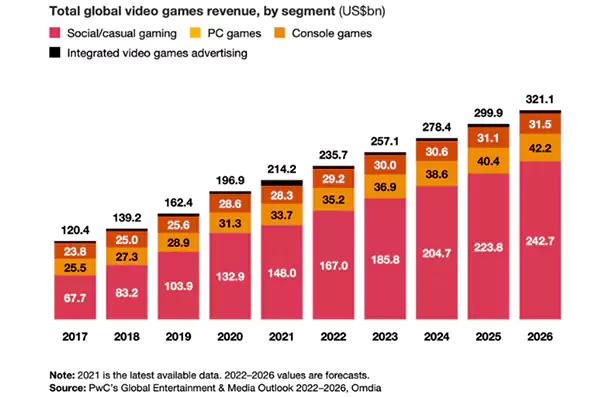Games of chance have been around for ages, even before the written records of history came into being. They have been a part of all the organized societies known to humankind.
The most prominent evolution of casinos was the gradual shift from playing them in the physical spaces to shifting to the virtual world of gambling, while simultaneously working on widening its scope while improving the game.
As the generations passed by, there has been a steady rise in virtual casino platforms due to their convenience.
It’s nice to be able to access the betting site from home. This helps us connect traditional brick-and-mortar casinos with modern digital ones. We can also learn about the fast withdrawal casino.
Together, let us witness the transition of live casinos as time went by, from the physical spaces to the digital realms of the digital age.

What was once happening on the bustling floors of brick-and-mortar establishments eventually turned to the digital realms for further expansion and choices.
The first online software that was developed by Microgaming dates back to 1994.
In 1996, CryptoLogic developed a secure online transaction system and launched ‘InterCasino’, the first online application that offered both casino games and an integrated online payment system.
Did You Know?
The 1st well-known casino, Il Ridotto, was set up in 1638 (Hotel Danieli in Venice) and served for 136 years!
As time went by, the digital realms of the casino were broadly divided into 2 broad categories- ‘virtual’ and ‘live dealer’.
In virtual casinos, the outcomes of the moves are determined through pseudo-random number generator(PRNG) software, ensuring that the results are random and unpredictable to mimic real-world casino experiences.
Whereas, the live dealer casinos use real-time results to determine the outcomes of the player moves, by streaming the games in real-time from a land-based or a studio.

The seismic shift has been witnessed over the ages as global digitalization swiftly paved its way as technological advancement was initiated.
As this was going on, the developers worked more on developing the tools for casinos to create more variations and options for the players.
The rise of casino online gaming occurred due to easy accessibility, convenience, and enhanced graphics.
The thought of engaging in the preferred games of the players in the comfort of their own homes made it much more approachable.

Did You Know?
According to PwC’s Global Entertainment and Media Outlook 2022-26,expansion is expected to make the global gaming industry worth $321 billion By 2026.
Though online casinos have been going on since the early 1990s, the introduction of the live dealer games concept revolutionized how punters had been playing online games.
The experience felt perceptible due to the natural surroundings alongside the real dealers on online video streaming platforms.
This concept has saved many online casinos’ reputations because many punters were doubtful of impartiality due to the RNGs (Random Number Generators).
So having physical equipment such as card tables, roulette equipment and live dealers instead of AI-based systems made the virtual gambling experience as authentic as possible.

AI technology development has fundamentally improved the online casino experience, and the performance of many applications has significantly risen as well.
Improved customer services have benefited from AI, as many sites now offer AI-run chatbots to attend the customer inquiries and provide 24/7 support.
It also has been used for analyzing the players’ behaviors and strategies, which allows the casino to offer personalized promotional offers and bonuses to the players.
This enhances the experience and relevance for the player, while also helping to increase casino user numbers and profits.
Not only has the AI improved casinos in the gaming aspects but also improved the security levels to maintain the privacy of the players to protect their financial details and fraudulent activity prevention.
This also prevents the negative impact on the casino’s reputation and ability to hold the appropriate gambling licenses.

The rise of mobile gaming has also influenced Live Dealer Casinos software development.
The surge in mobile gaming can be attributed to a confluence of factors, with advancements in smartphone technology and the widespread availability of high-speed internet (including 4G and 5G networks).
Smartphones which were once restricted to basic communication and utility functions have now evolved into devices with powerful processors, high-resolution displays, and advanced graphics capabilities.
Fun Fact!
The earliest casinos are known to have existed as far as 1000 BC in China!
Online Casinos have seized the opportunity in particular to recognize and capitalize on this shift.
Recognizing the potential for growth in the mobile market, casino operators have invested heavily in developing the applications and optimized their websites for seamless experiences on IOS and Android devices.

The integration of Virtual and Augmented reality into the casino industry is the best example of the synergy between technology and entertainment.
Approaching these two in the present-day scenario is shaping the future of casinos.
They not only enrich the gaming experience but also are the reflection of a broader trend of adapting with innovation for redefining our entertainment preferences.
AR adds digital components to the actual environment, while VR immerses the players within the virtual environment.

Overall, the journey of the live casinos through the timeline shows how modern-day casinos have adapted to some features of the old-fashioned casinos.
What was occurring in a parlor of high societies and brick-and-mortar establishments has now swiftly shifted to the digital realms for convenience and accessibility of the players.
They can easily be involved in it due to the engagement activities and quick services provided.
But this is not the end of the development of innovations. This is a saga that will continue to grow on and on as per the requirements of the users.